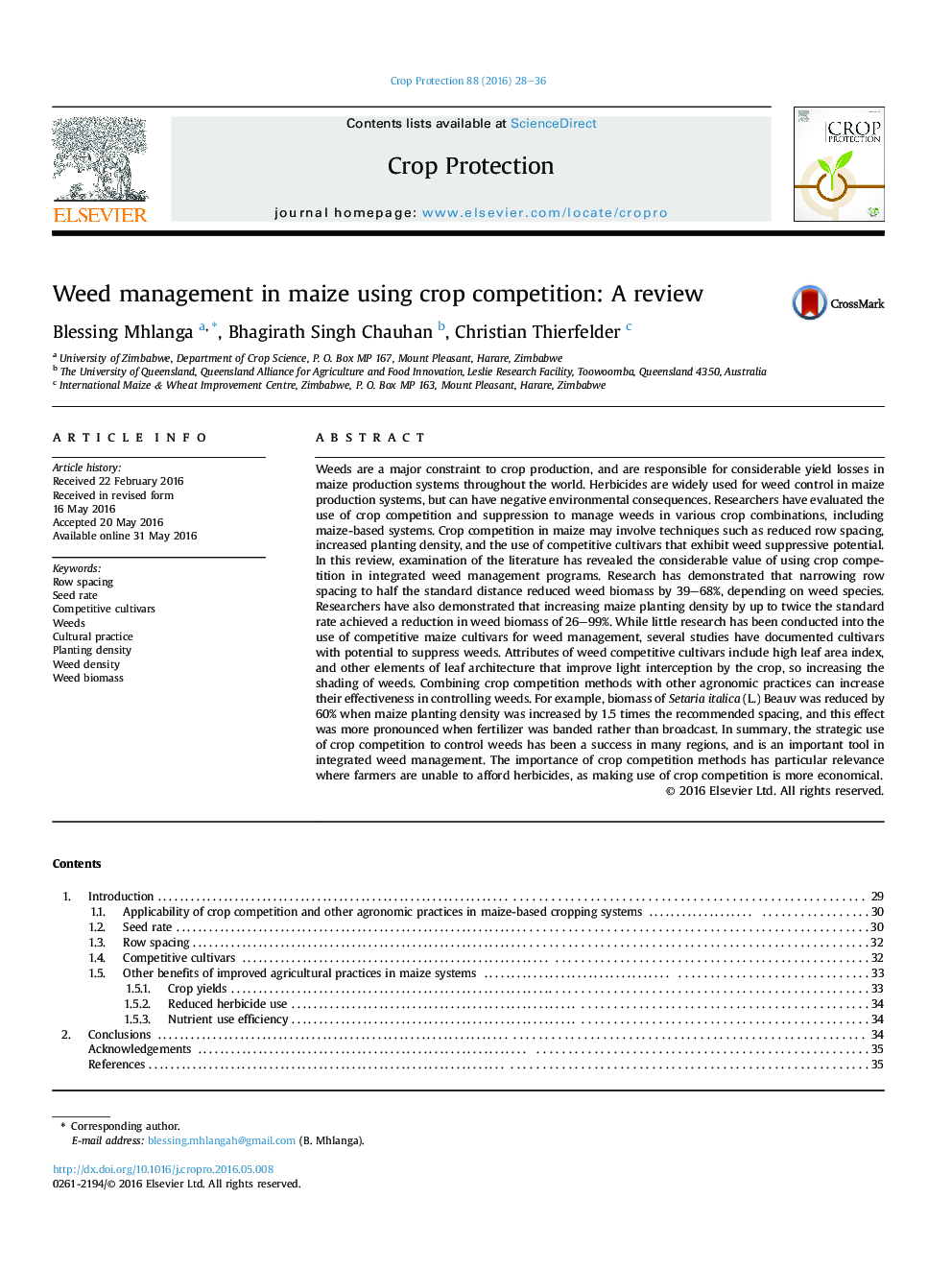| کد مقاله | کد نشریه | سال انتشار | مقاله انگلیسی | نسخه تمام متن |
|---|---|---|---|---|
| 4505521 | 1624299 | 2016 | 9 صفحه PDF | دانلود رایگان |
• Crop competition includes row spacing, population and competitive cultivars
• Weed management through crop competition is effective and economic
• Crop competition results in considerable weed population decreases
• Responses of weeds to crop competition are variable
Weeds are a major constraint to crop production, and are responsible for considerable yield losses in maize production systems throughout the world. Herbicides are widely used for weed control in maize production systems, but can have negative environmental consequences. Researchers have evaluated the use of crop competition and suppression to manage weeds in various crop combinations, including maize-based systems. Crop competition in maize may involve techniques such as reduced row spacing, increased planting density, and the use of competitive cultivars that exhibit weed suppressive potential. In this review, examination of the literature has revealed the considerable value of using crop competition in integrated weed management programs. Research has demonstrated that narrowing row spacing to half the standard distance reduced weed biomass by 39–68%, depending on weed species. Researchers have also demonstrated that increasing maize planting density by up to twice the standard rate achieved a reduction in weed biomass of 26–99%. While little research has been conducted into the use of competitive maize cultivars for weed management, several studies have documented cultivars with potential to suppress weeds. Attributes of weed competitive cultivars include high leaf area index, and other elements of leaf architecture that improve light interception by the crop, so increasing the shading of weeds. Combining crop competition methods with other agronomic practices can increase their effectiveness in controlling weeds. For example, biomass of Setaria italica (L.) Beauv was reduced by 60% when maize planting density was increased by 1.5 times the recommended spacing, and this effect was more pronounced when fertilizer was banded rather than broadcast. In summary, the strategic use of crop competition to control weeds has been a success in many regions, and is an important tool in integrated weed management. The importance of crop competition methods has particular relevance where farmers are unable to afford herbicides, as making use of crop competition is more economical.
Journal: Crop Protection - Volume 88, October 2016, Pages 28–36
